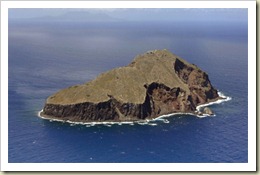Redonda Island
 In the West Indies, more exactly in the Leeward Islands, there is the small island called Redonda. This uninhabited Caribbean islet is dependent to the nation of Antigua and Barbuda.
In the West Indies, more exactly in the Leeward Islands, there is the small island called Redonda. This uninhabited Caribbean islet is dependent to the nation of Antigua and Barbuda.
Redonda is to be found between Nevis and Montserrat islands, at 56.2 km southwest of Antigua. Montserrat is the closest island to Redonda.
The island is a single large volcanic rock and it raises only a few from sea level. Most of its surface is sheer cliffs. When Columbus saw it first, he thought it to be round. In reality, it has a long, narrow shape. Its surface is believed to cover between 1.6 square km and 2.6 square km and it has its highest point at 296 meters above sea level. The only inhabitants of Redonda Island are some seabirds and some feral goats, surviving on top of the island.
History of Redonda
Redonda was discovered in 1493 by Christopher Columbus. Although he didn’t land on this island, it was claimed on behalf of Spain. Columbus named the island Santa Maria la Redonda, referring to the round shape he thought it had. Redonda passed to British administration in the 1860s.
After becoming British possession, the island was highly exploited for its phosphine oxide deposites, also known as guano. Guano is largely used as fertilizer and the island produces up to 7 thousands tons each year. The only time Redonda was inhabited was during its exploitation when workers lived there. There were 120 people living on the island in 1901. They left the island, however, during the First World War, when mining operations stopped and it hasn’t been inhabited ever since. In 1967 Redonda passed to the nation of Barbuda and Antigua.
Presently, the island is used as observatory for the volcanic activity of the Soufriere Hills on Monserrat. Teams of scientists come periodically to the island by helicopter and take measurements.